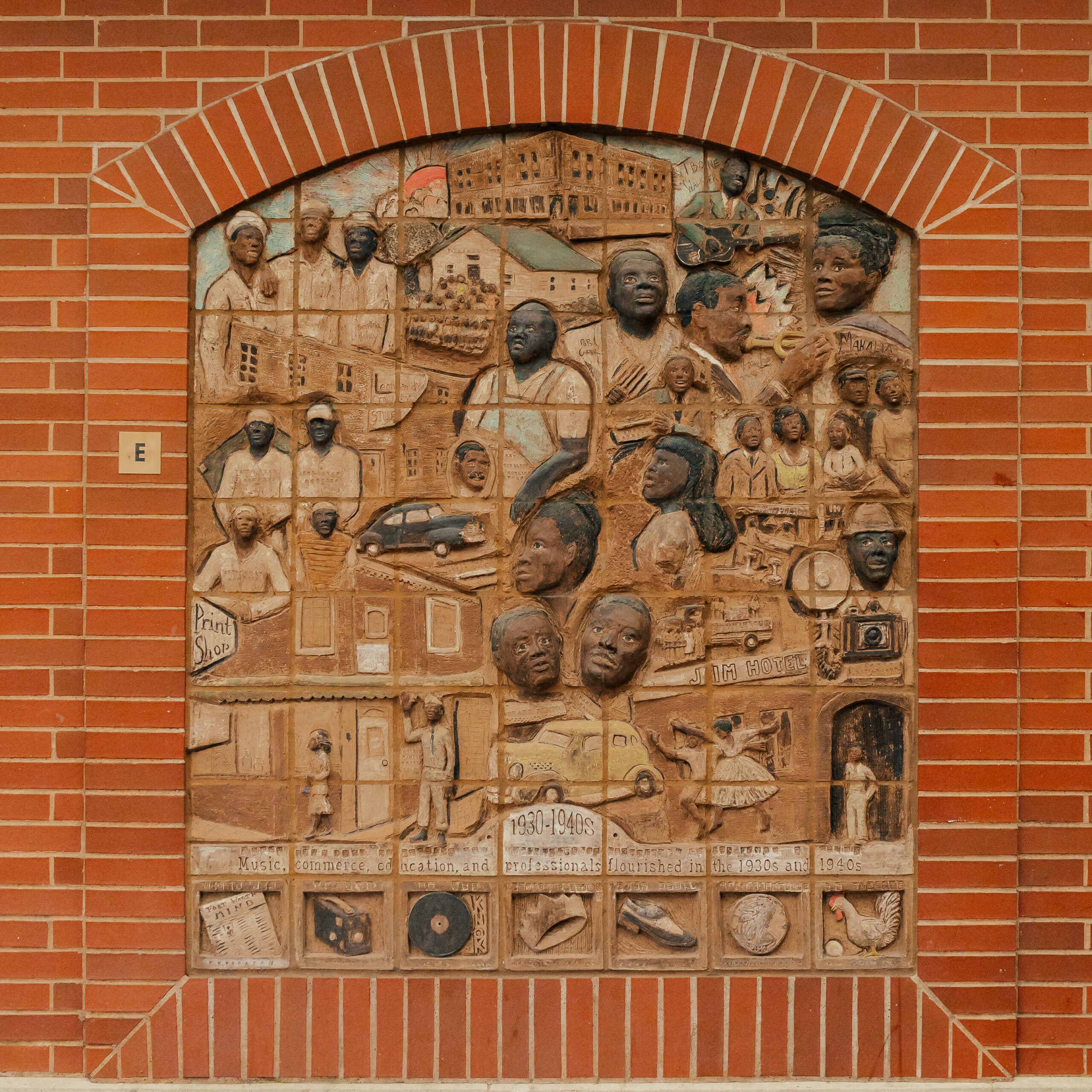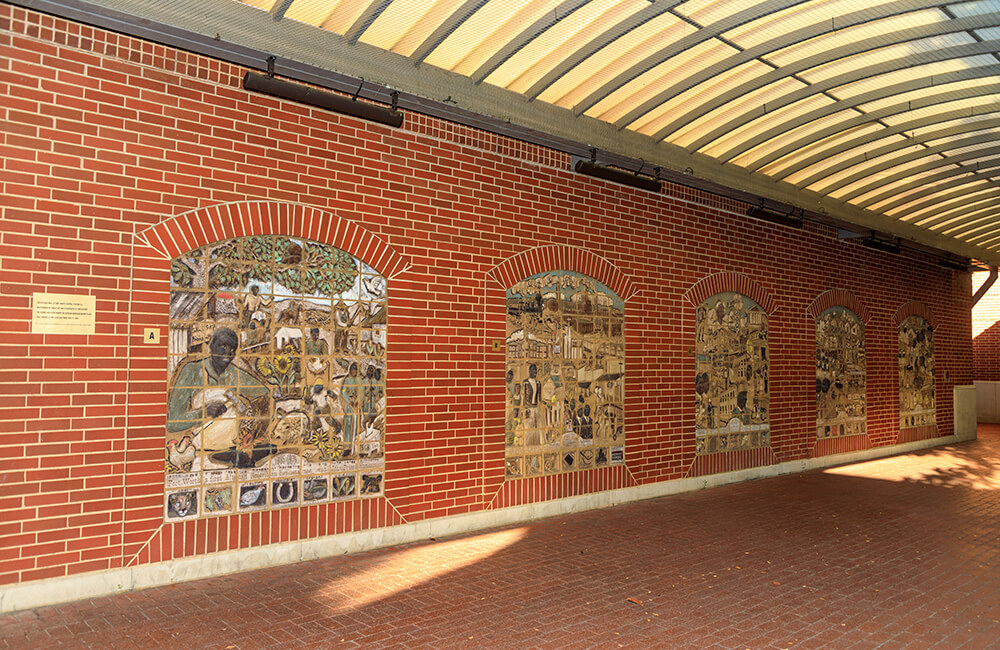
The Historic Wall was dedicated on Feb. 24, 2002, to commemorate the important and vibrant African-American commercial and historic warehouse district that existed at the site of the Fort Worth Central Station between 1865 and 1940. Working with the State Historic Preservation Office, the Black Historical and Genealogical Society, Historic Fort Worth and many community volunteers, Trinity Metro developed this display to perpetuate the economic and cultural contributions of this era.
The five panels weave a rich history of business and commerce on the eastern edge of downtown. Fort Worth Council Member Gyna Bivens provided an audio recording to help viewers learn more about this important public art project.
Panel A | 1865-1876
The first panel of the Historic Wall celebrates the infancy of Fort Worth. In 1872, there were only 500 residents. The cattle industry was dominant and the area was a part of Hell’s Half Acre, with its bars and brothels.
African Americans were among the cowboys driving cattle to the city, as well as owning saloons and other service businesses. The first recorded African-American businessman was John Pratt, a blacksmith, in 1865. African-American women were hired to do the laundry when the first small hotel was built. The Allen Chapel AME was created in 1871. The news of the Texas & Pacific Railway coming to Fort Worth created a population explosion.
The Civil War ended in 1865; however, slaves in Texas did not receive the news until June 19, 1865, which is still celebrated as Juneteenth. Free slaves who did not sign contracts with former owners lived in tents provided by Union soldiers, who protected the polls when African Americans first voted in 1868.
Small homesteads sprung up that had gardens, chickens and smokehouses. Young boys were hired to chase the wild hogs from the yards, panthers were seen in the streets and tall sunflowers grew everywhere.
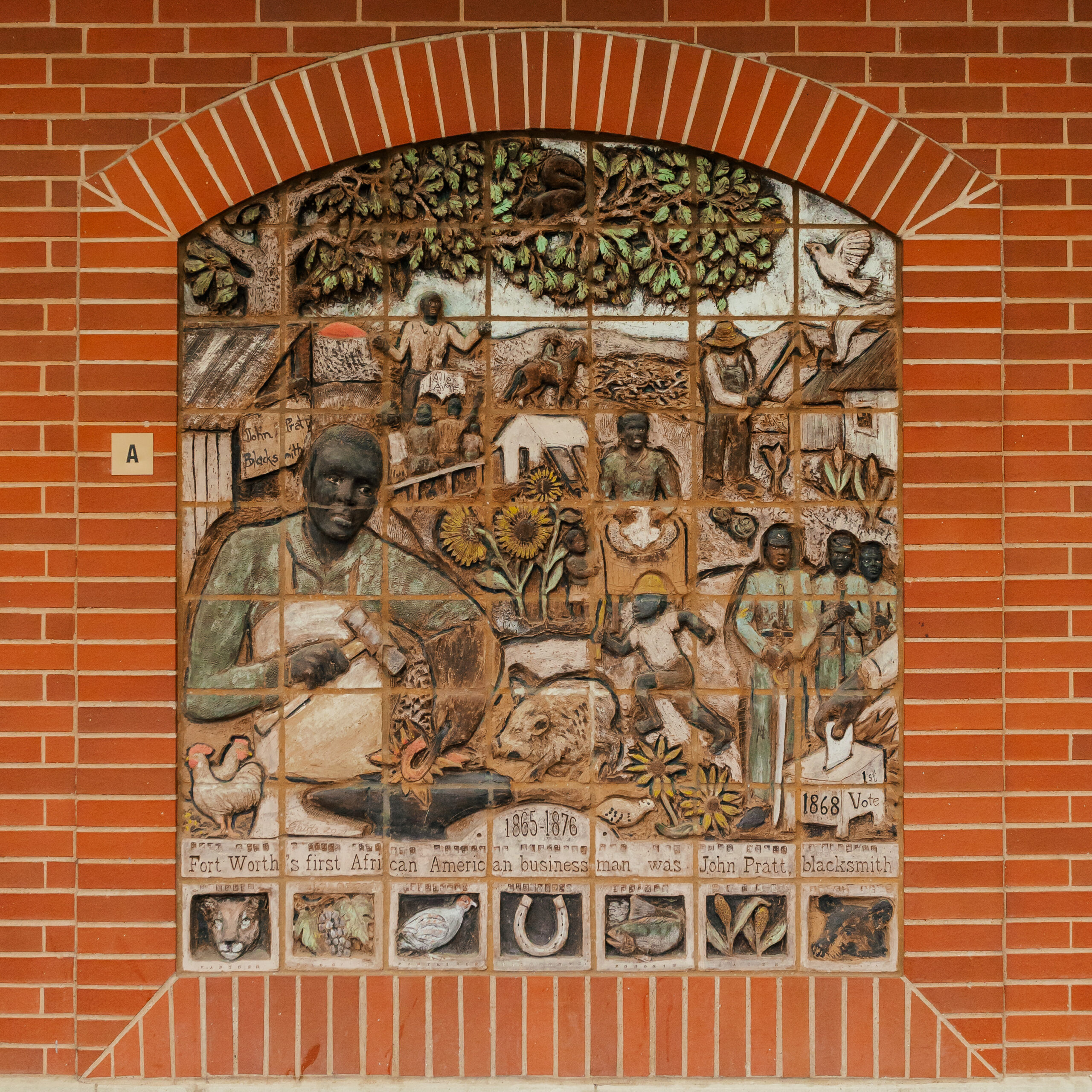
Panel B | 1876-1900
In 1876, the train arrived in Fort Worth brining settlers of Chinese, Irish and Africa-American descent to live in the city. Other transportation options sprung up including the first horse-drawn trolley.
Business flourished including Anchor Mills in 1880, Acme Brick in 1891, Binyon O’Keefe Storage in 1877, and two breweries, Texas Brewing Company and Casey Swasey. Chinese restaurants and laundries were established; other less reputable business also prospered, including large houses of ill repute, small brothels, gambling houses and saloons.
The Spring Palace showcased agricultural triumphs in the fertile land around the city. Sanitation was a concern from the many flies around the fresh meat markets, cattle and other animals. Homesteads, which were plentiful now, each had a water barrel, and water was also hauled by horse-drawn wagons.
The Knights of Pythias was formed as a backbone of the community. The African-American community celebrated several milestones during this period. The I.M. Terrell School listed four teachers in 1882 and The Ninth Street Colored School was also in session. The Texas Colored State Fair, organized by William Madison McDonald, was in Fort Worth in 1887. Mount Gilead Church services were held in a small frame building.
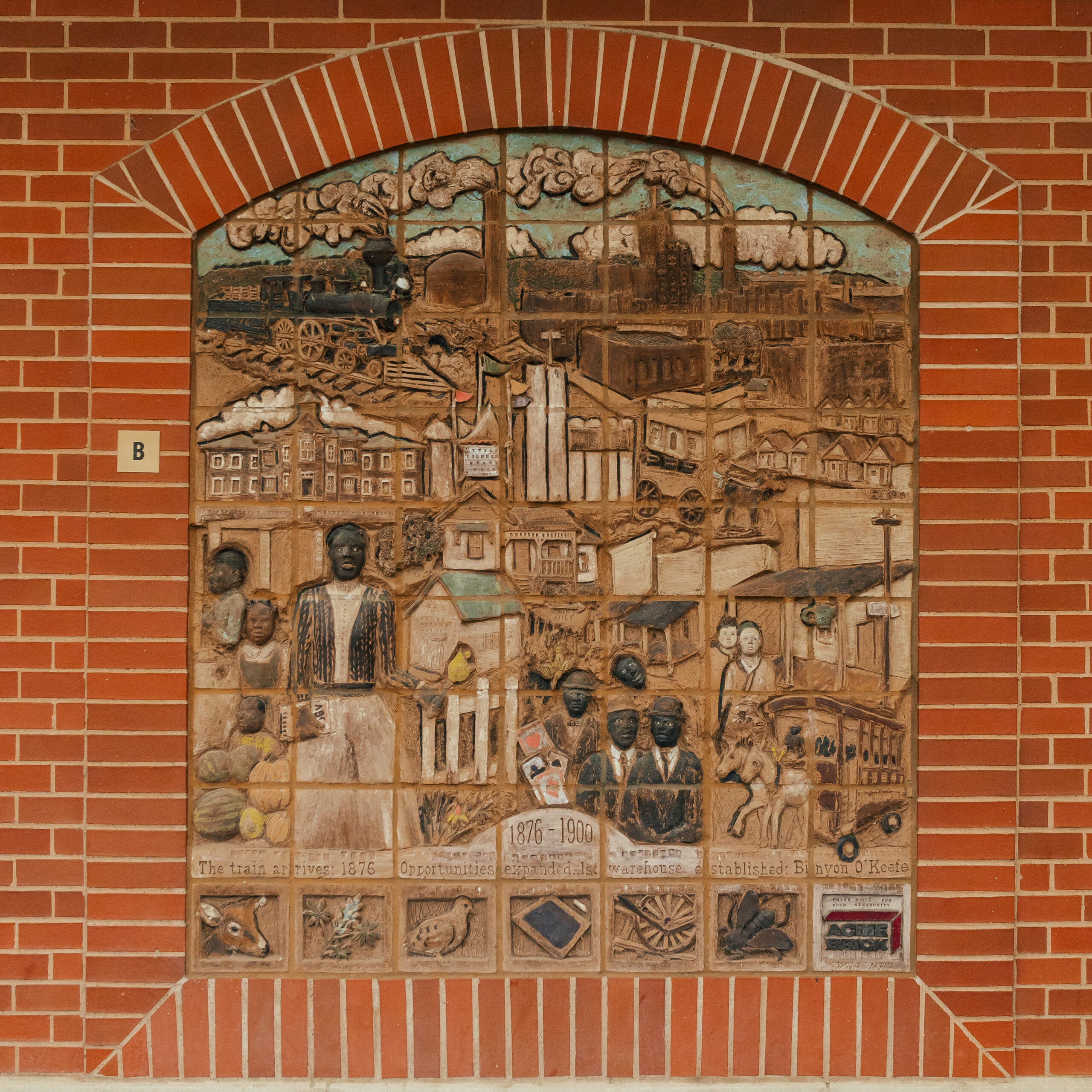
Panel C | 1900-1920
By 1907, there were more than 50 African-American-owned businesses flourishing in the area including doctors, hotels, barbershops, dentists, tailors, millineries, butchers, grocers and beauty shops.
The Ethel Ransom Memorial Hospital opened, as did the C. Morrow People’s Undertaking and Ambulance service. I.M. Terrell School constructed a new building in 1909. The Fraternal Bank and Trust, established in 1912 by William “Gooseneck” McDonald, was integral in assisting families to save for their homes and businesses. Several warehouses were also built, like the Nash Hardware building and Hunt-Hawes Grocer Company in 1910, the Axtell Windmill Supply Company in 1916 and the Winfield Garage and Livery in 1920.
The Majestic Theater opened in 1911 and featured lively vaudeville-style entertainment. Lenora Rolla, a young African-American activist, businesswoman, educator, and historian during this period, would later establish the Tarrant County Black Historical and Genealogical Society.
In this time, the city transitioned from horses to cars, even sporting a Model T Ford plant on Commerce Street. Transportation choices also expanded to include the first electric trolley and Cooper Cab services. This period also marks the beginning of World War I, in which many African Americans proudly served their country.
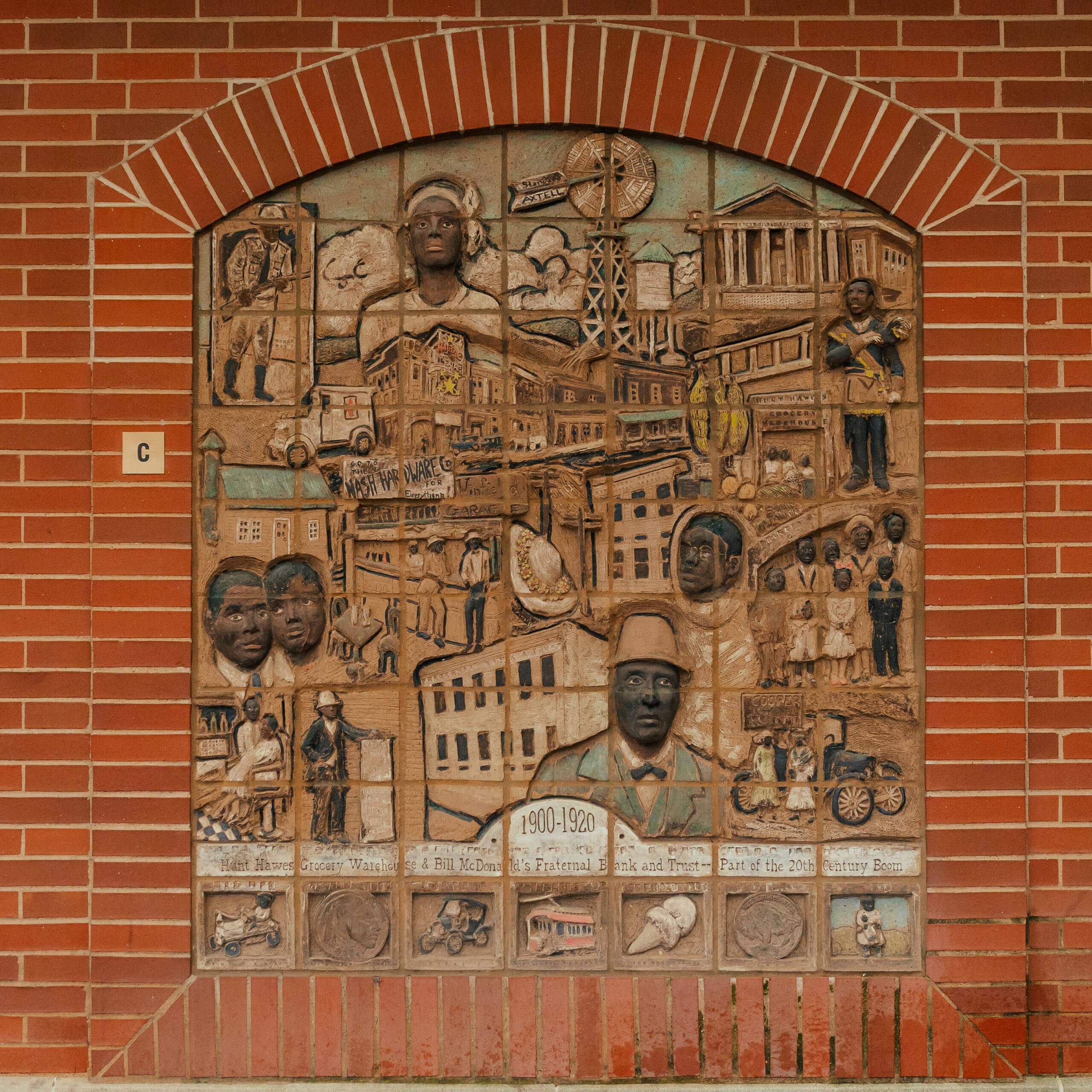
Panel D | 1920-1930
This era marked the beginning of modernization in Fort Worth. Deliveries were made by motor cars, as there were no more horses and mules in town. The city and the African-American business district began to diversify. The Fort Worth Hornet told the stories of the community. At I.M. Terrell School, Professor and Mrs. I.M. Terrell were broadening the curriculum to include theater and sports like basketball, in which they were state champions.
Opal Lee attended Cooper Street Elementary and then taught there for more than a decade after the school was renamed the Amanda F. McCoy Elementary. She later became a home school counselor for the Fort Worth Independent School District and organized an annual community Juneteenth celebration.
The diversity of housing was changing as millionaire William McDonald built his mansion while other African Americans moved to the Rock Island Bottoms, now lost to flooding and I-35 road construction. Other construction brought the Knights of Pythias a new home as well as Fakes Warehouse, Montgomery Ward Catalog and Warehouse, and two drugstores, Payne’s Ure and Stovall’s. The Produce Terminal Farmers Wholesale was a seven-day-a-week farmer’s market bringing fresh produce into the city. Because many mothers were working during this time, a children’s daycare is pictured.
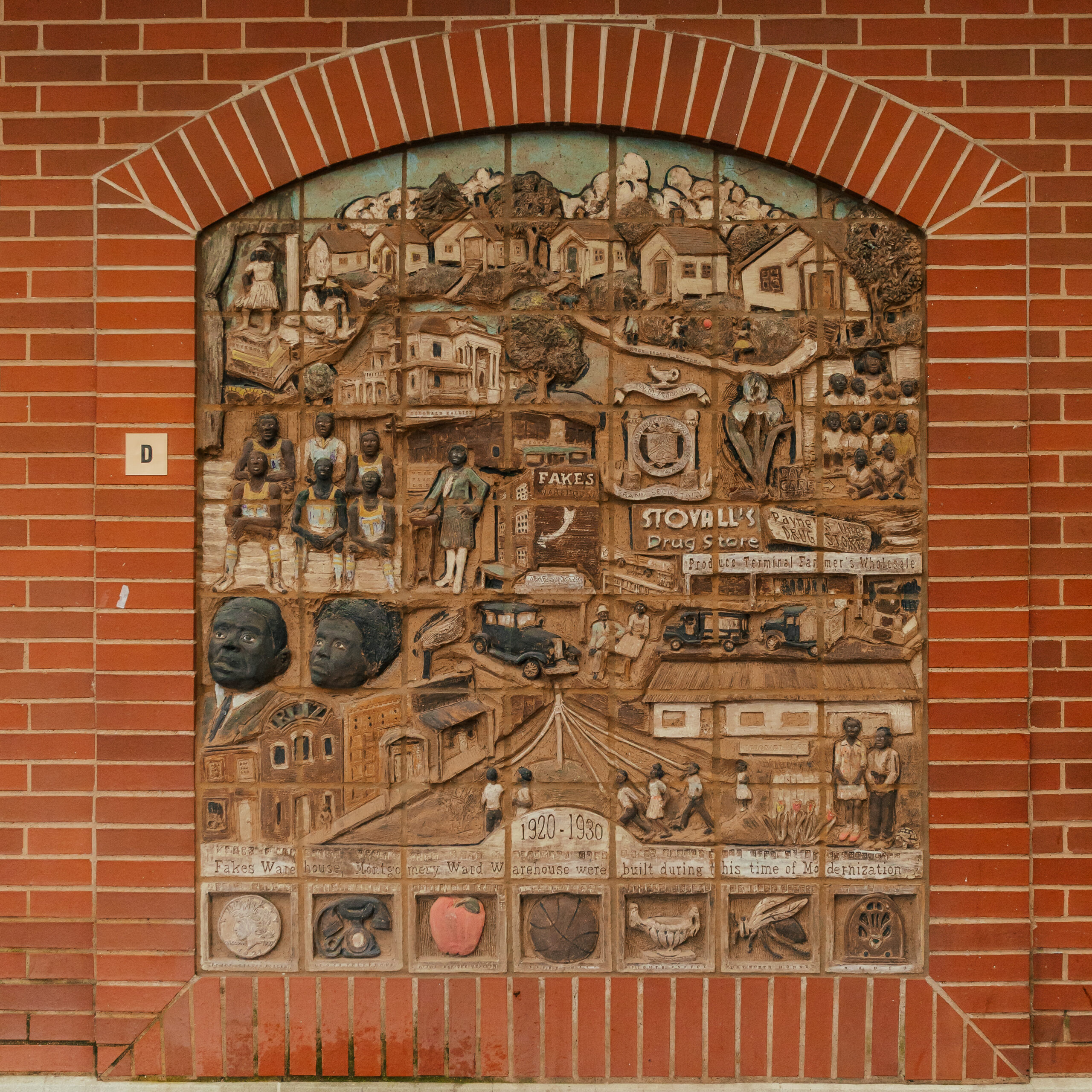
Panel E | 1930-1940
The jazz age came to Fort Worth in a big way with performances at the Ritz Theater and Jim Hotel and the Masonic Mosque. T. Bone Walker, Mahalia Jackson, Pops Carter, local drummer Sonny Strain and many others were seen at local clubs wearing zoot suits and saddle shoes.
Charles Grays Sr. worked closely with Lenora Rolla to address citizen concerns. Calvin Littlejohn chronicled the era though his photography. Reverend John Franklin Singleton was known as the “Howling Wolf” from his sermons. The Urban League worked to improve the African-American community.
Education continued to be important as teachers like Hazel Harvey Peace brought the classics to students at I.M. Terrell High School. Frank Staton, longtime educator, is represented for his tireless efforts for children.
Transportation moved into the modern age with the Texas and Pacific Railroad Station. The Great Depression hit hard, but the Fraternal Bank and Trust weathered the storm. Many residents and community leaders were once again called to defend their country in World War II like Dr. Marion Brooks, a prominent physician and community leader.
